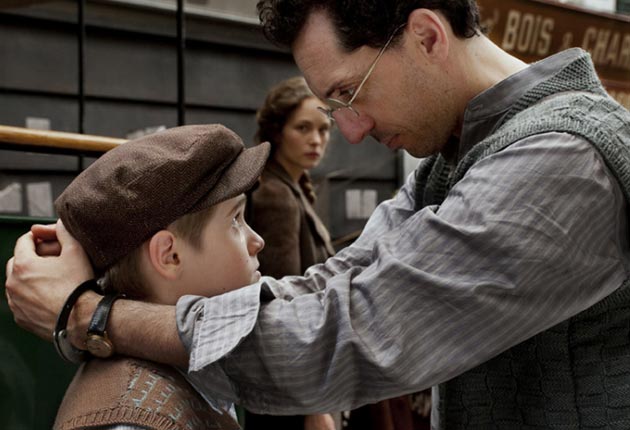Film awakens France's shame in the Holocaust
Director tells story of how 13,000 Jews were herded into Paris velodrome

France likes to point the cinema camera on its own past, good and bad, but one of the darkest events in modern French history has been almost banished from the screen, until now. The movie Le Rafle, which opens in France on Wednesday, is the first to address head-on the most notorious episode in the persecution of French Jews during the Second World War.
The film, which has won glowing tributes from advance viewers, tells the story of the arrest of 13,000 Parisian Jews, including 4,000 children, by French police and gendarmes in July 1942. The Jews, mostly French-born and deeply integrated into Parisian life, were herded into a giant cycling stadium, the Vélodrome d'Hiver, or Vél d'Hiv, close to the Eiffel Tower. Almost all of them died in Nazi death or concentration camps.
The Rafle du Vél'd'Hiv has come to symbolise the enthusiastic participation of many – not all – French officials and police officers in the Holocaust. It has also come to represent the efforts of many other ordinary French people to protect Jews from arrest and deportation. The collaborationist French authorities in Paris set out to round up 25,000 Jews on 16 July 1942. Almost half of them escaped.
The film will shock modern cinema audiences, and schools. The French education minister, Luc Chatel, said he would ensure it was available to all students aged 17 and 18 on a new schools video network from September.
Former president Jacques Chirac yesterday saluted the film's willingness to portray "atrocious images of officials in French uniforms separating mothers from their children ... and throwing them brutally into wagons of death". In a newspaper article, Mr Chirac recalled that, soon after his arrival in the Elysée Palace in 1995, he became became the first French leader to admit officially that the French state had played an active part in the Holocaust. "There can be no great nation, no national unity ... without a willingness to remember," he wrote.
In other words, it took France half a century to face up to its part in the persecution, and slaughter, of Jews by the Nazis. It took more than three decades before the subject could be openly addressed. The celebrated 1969 Swiss documentary movie Le Chagrin et Le Pitié by Marcel Ophuls – on collaboration and the persecution of Jews in Clermont Ferrand – was banned from French screens until 1981.
The fate of Jews in France between 1940 and 1944 has been addressed in several French movies since. One or two have included references to the "Rafle du Vél d'Hiv". But the film that appears this week, directed by Rose Bosch, is the first to make the "Rafle" its centre-piece.
It stars, amongst others, a popular French-Jewish stand-up comedian, Gad Elmaleh. The film follows the story of one Jewish family among the hundreds who were dragged from their homes by French police. The screenplay is based closely on the experiences of Joseph Weisman, who was 11 at the time, and escaped deportation. "I have seen the film twice," Mr Weisman said at the weekend.
"But I actually did not see it the first time. From the very first scene, it was as if I was dragged right through the screen. I was back amid all that muddle of kids and old people, men, women, gendarmes, militamen. It was as if time had disappeared. Then on the second viewing, I forced myself to watch properly. No one could have told the story of the Rafle better. The cycle track , the way it looked, the way it felt, was just like in 1942."
The velodrome – partly because of its associations – was obliterated after the war and replaced by blocks of flats. For the film, a half-size replica was created on location in Hungary.
Serge Klarsfeld, 73, the veteran French campaigner to keep memories of the Holocaust alive, said that the film's greatest achievement was to "compensate for the complete absence of historical images. Not a single photograph exists to recall what happened at the Vél d'Hiv".
It is estimated that 76,000 Jews were deported from France between 1940 and 1944. Only 2,500 are believed to have survived the death and concentration camps.
Subscribe to Independent Premium to bookmark this article
Want to bookmark your favourite articles and stories to read or reference later? Start your Independent Premium subscription today.

Join our commenting forum
Join thought-provoking conversations, follow other Independent readers and see their replies